
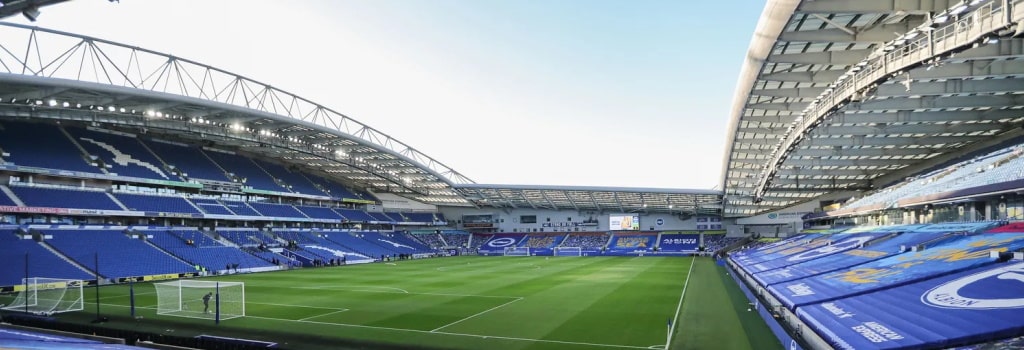
Football teams moving into new stadiums is a fact of everyday life now. Some fans greet this with open arms, looking forward to better facilities in the new ground. Others less so, with concerns over the changes and fear of the club losing its identity - plus a change to matchday traditions which may have spanned several generations of the same family.
We have delved into the archives and scoured the record books to discover what effect moving into a new stadium has on a club. To do this, we concentrated on two major factors:
Football clubs used to move grounds quite a lot back in the late 1800s and early 1900s. This was mainly due to the sport gaining popularity at the time, and the team finding their place in the local community.
However, the later half of the 21st century saw a lull in new stadiums being built. Southend United opened Roots Hall in 1955, but after that, no major stadium was built until Scunthorpe United moved into Glanford Park in 1988.
Scunny started somewhat of a revolution, and coupled with the increased safety standards after the Hillsborough Disaster, we are now used to clubs either rebuilding or relocating to a new ground.
But can we link new stadiums to an upturn in a club's success? Read on to find out...
| Old Stadium | New Stadium | Old vs New | |||||
|---|---|---|---|---|---|---|---|
| Team | Average Position | Average Attendance | Average Position | Average Attendance | Average Position Change | Average Attendance Change | |
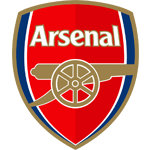 | Arsenal Old stadium: Highbury New stadium: The Emirates Stadium | 2 | 38,025 | 3 | 60,014 | +1 | +21,989 (+58%) |
 | Bolton Wanderers Old stadium: Burnden Park New stadium: Toughsheet Community Stadium | 42 | 9,837 | 16 | 22,470 | -26 | +12,633 (+128%) |
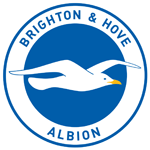 | Brighton & Hove Albion Old stadium: The Withdean Stadium New stadium: Amex Stadium | 50 | 6,462 | 23 | 26,700 | -27 | +20,238 (+313%) |
 | Cardiff City Old stadium: Ninian Park New stadium: Cardiff City Stadium | 43 | 12,790 | 25 | 22,216 | -18 | +9,426 (+74%) |
 | Chesterfield Old stadium: Saltergate New stadium: SMH Group Stadium | 67 | 4,213 | 74 | 5,845 | +7 | +1,632 (+39%) |
 | Colchester United Old stadium: Layer Road New stadium: JobServe Community Stadium | 53 | 3,723 | 63 | 4,131 | +10 | +408 (+11%) |
 | Coventry City Old stadium: Highfield Road New stadium: The Coventry Building Society Arena | 23 | 18,187 | 40 | 17,232 | +17 | -955 (-5%) |
 | Derby County Old stadium: The Baseball Ground New stadium: Pride Park | 20 | 15,980 | 23 | 26,902 | +3 | +10,922 (+68%) |
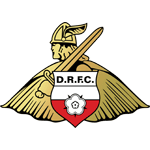 | Doncaster Rovers Old stadium: Belle Vue New stadium: The Keepmoat Stadium | 78 | 5,021 | 49 | 8,651 | -29 | +3,630 (+72%) |
 | Huddersfield Town Old stadium: Leeds Road New stadium: The John Smith's Stadium | 49 | 6,415 | 44 | 11,987 | -5 | +5,572 (+87%) |
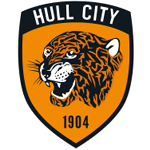 | Hull City Old stadium: Boothferry Park New stadium: The KCOM Stadium | 74 | 5,078 | 39 | 19,351 | -35 | +14,273 (+281%) |
 | Leicester City Old stadium: Filbert Street New stadium: The King Power Stadium | 17 | 18,882 | 32 | 24,420 | +15 | +5,538 (+29%) |
 | Manchester City Old stadium: Maine Road New stadium: Etihad Stadium | 24 | 29,430 | 8 | 44,531 | -16 | +15,101 (+51%) |
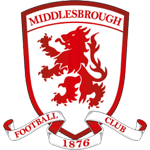 | Middlesbrough Old stadium: Ayresome Park New stadium: The Riverside Stadium | 30 | 14,546 | 13 | 30,955 | -17 | +16,409 (+113%) |
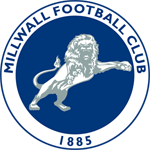 | Millwall Old stadium: The Old Den New stadium: The Den | 31 | 8,479 | 42 | 9,127 | +11 | +648 (+8%) |
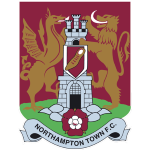 | Northampton Town Old stadium: The County Ground New stadium: Sixfields | 76 | 3,625 | 71 | 5,408 | -5 | +1,783 (+49%) |
 | Oxford United Old stadium: The Manor Ground New stadium: The Kassam Stadium | 47 | 6,402 | 89 | 5,839 | +42 | -563 (-9%) |
 | Reading Old stadium: Elm Park New stadium: Select Car Leasing Stadium | 48 | 6,590 | 33 | 16,291 | -15 | +9,701 (+147%) |
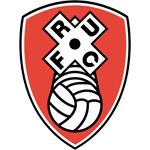 | Rotherham United Old stadium: Millmoor New stadium: New York Stadium | 63 | 4,977 | 47 | 9,273 | -16 | +4,296 (+86%) |
 | Scunthorpe United Old stadium: The Old Showground New stadium: Glanford Park | 78 | 2,585 | 78 | 3,167 | 0 | +582 (+23%) |
 | Shrewsbury Town Old stadium: Gay Meadow New stadium: The New Meadow | 84 | 3,519 | 71 | 5,603 | -13 | +2,084 (+59%) |
 | Southampton Old stadium: The Dell New stadium: St Mary's Stadium | 15 | 14,935 | 29 | 25,306 | +14 | +10,371 (+69%) |
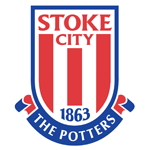 | Stoke City Old stadium: The Victoria Ground New stadium: bet365 Stadium (The Britannia Stadium) | 39 | 12,684 | 38 | 14,496 | -1 | +1,812 (+14%) |
 | Sunderland Old stadium: Roker Park New stadium: The Stadium of Light | 32 | 17,914 | 18 | 36,841 | -14 | +18,927 (+106%) |
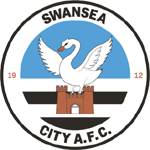 | Swansea City Old stadium: Vetch Field New stadium: The Liberty Stadium | 76 | 5,051 | 26 | 16,773 | -50 | +11,722 (+232%) |
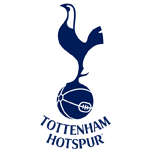 | Tottenham Hotspur Old stadium: White Hart Lane New stadium: Tottenham Hotspur Stadium | 4 | 35,318 | 5 | 56,428 | +1 | +21,110 (+60%) |
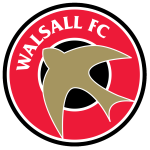 | Walsall Old stadium: Fellows Park New stadium: The Bescot | 55 | 4,706 | 66 | 4,362 | +11 | -344 (-7%) |
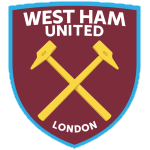 | West Ham United Old stadium: Upton Park (Boleyn Ground) New stadium: London Stadium (Olympic Stadium) | 14 | 33,982 | 11 | 57,772 | -3 | +23,790 (+70%) |
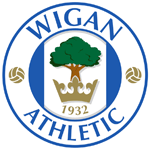 | Wigan Athletic Old stadium: Springfield Park New stadium: DW Stadium | 67 | 2,980 | 30 | 12,410 | -37 | +9,430 (+316%) |
Arsenal needed a new stadium for many years. Whilst Highbury was a fantastic historic stadium, the Gunners sold out every week and had a season ticket waiting list of thousands. With part of Highbury Grade II listed, expansion was out of the question. Eventually the club moved into nearby Ashburton Grove, known as the Emirates Stadium in a lucrative deal with the Dubai-based airline.
Whilst the move to the Emirates hasn't resulted in any improvement in league position (Arsenal went from being a top 4 club to still being a top 4 club), the average attendance for home matches has increased more than 50% - from 38,025 up to 60,014. One thing that the Emirates hasn't delivered is league titles though - Arsenal won the Premier League 3 times in Highbury's last 10 years, but didn't finish higher than 2nd in the first 10 years at the Emirates.
Old stadium: Highbury (1913 - 2006, 93 years)
New stadium: The Emirates Stadium (Opened 2006, £390m)
Old stadium average attendance: 38,025
New stadium average attendance: 60,014
Difference: +21,989 (+58%)
Old stadium average league position: 2
New stadium average league position: 3
Difference: +1
| Highbury | |
| 1996/1997 | 37,821 |
| 1997/1998 | 38,053 |
| 1998/1999 | 38,024 |
| 1999/2000 | 38,024 |
| 2000/2001 | 37,974 |
| 2001/2002 | 38,075 |
| 2002/2003 | 38,029 |
| 2003/2004 | 38,079 |
| 2004/2005 | 37,975 |
| 2005/2006 | 38,184 |
| The Emirates Stadium | |
| 2006/2007 | 60,040 |
| 2007/2008 | 60,083 |
| 2008/2009 | 60,040 |
| 2009/2010 | 59,927 |
| 2010/2011 | 60,023 |
| 2011/2012 | 60,000 |
| 2012/2013 | 60,079 |
| 2013/2014 | 60,013 |
| 2014/2015 | 59,992 |
| 2015/2016 | 59,944 |
| Highbury | |
| 1996/1997 | 3 |
| 1997/1998 | 1 |
| 1998/1999 | 2 |
| 1999/2000 | 2 |
| 2000/2001 | 2 |
| 2001/2002 | 1 |
| 2002/2003 | 2 |
| 2003/2004 | 1 |
| 2004/2005 | 2 |
| 2005/2006 | 4 |
| The Emirates Stadium | |
| 2006/2007 | 4 |
| 2007/2008 | 3 |
| 2008/2009 | 4 |
| 2009/2010 | 3 |
| 2010/2011 | 4 |
| 2011/2012 | 3 |
| 2012/2013 | 4 |
| 2013/2014 | 4 |
| 2014/2015 | 3 |
| 2015/2016 | 2 |
Bolton vacated Burnden Park in 1997, a stadium which had been their home since 1895. Originally called the Reebok Stadium, the new ground has brought and upturn in both league position and a big increase in average attendance.
League position improved from an average of 42nd in the last 10 years of Burnden Park (towards the bottom of the 2nd tier) to 15th after the move (mid-table in the top flight). Average attendance more than doubled from 9,837 up to 22,469.
Old stadium: Burnden Park (1895 - 1997, 102 years)
New stadium: Toughsheet Community Stadium (Opened 1997, £25m)
Old stadium average attendance: 9,837
New stadium average attendance: 22,470
Difference: +12,633 (+128%)
Old stadium average league position: 42
New stadium average league position: 16
Difference: -26
| Burnden Park | |
| 1987/1988 | 5,018 |
| 1988/1989 | 5,528 |
| 1989/1990 | 7,286 |
| 1990/1991 | 7,286 |
| 1991/1992 | 6,030 |
| 1992/1993 | 9,062 |
| 1993/1994 | 10,498 |
| 1994/1995 | 13,029 |
| 1995/1996 | 18,822 |
| 1996/1997 | 15,820 |
| Toughsheet Community Stadium | |
| 1997/1998 | 24,352 |
| 1998/1999 | 18,038 |
| 1999/2000 | 14,297 |
| 2000/2001 | 16,062 |
| 2001/2002 | 25,098 |
| 2002/2003 | 25,019 |
| 2003/2004 | 26,795 |
| 2004/2005 | 26,163 |
| 2005/2006 | 25,265 |
| 2006/2007 | 23,606 |
| Burnden Park | |
| 1987/1988 | 71 |
| 1988/1989 | 54 |
| 1989/1990 | 50 |
| 1990/1991 | 50 |
| 1991/1992 | 57 |
| 1992/1993 | 46 |
| 1993/1994 | 34 |
| 1994/1995 | 23 |
| 1995/1996 | 20 |
| 1996/1997 | 21 |
| Toughsheet Community Stadium | |
| 1997/1998 | 18 |
| 1998/1999 | 26 |
| 1999/2000 | 26 |
| 2000/2001 | 23 |
| 2001/2002 | 16 |
| 2002/2003 | 17 |
| 2003/2004 | 8 |
| 2004/2005 | 6 |
| 2005/2006 | 8 |
| 2006/2007 | 7 |
If a football team ever needed a new ground, it's Brighton and Hove Albion. Brighton were homeless after its owners sold the Goldstone Ground in 1997. Until 2011, the club played at the woefully inadequate Withdean Stadium, complete with temporary stands and a running track around the pitch.
In 2011, Albion moved onto the shiny new 30,000 capacity Amex Stadium which saw an incredible upturn in fortunes both on and off the pitch. Off the pitch, attendances soared 313% from 6,462 to 26,700 - that's the second biggest percentage increase on our list. Most importantly, Albion improved dramatically on the pitch from an average of 50th (6th League One) to 23rd (3rd in the Championship) - the last 4 years of which were spent in the Premier League.
Brighton's move to the Amex is a shining example of how a sleeping giant can be woken with a new stadium.
Old stadium: The Withdean Stadium (1997 - 2011, 14 years)
New stadium: Amex Stadium (Opened 2011, £93m)
Old stadium average attendance: 6,462
New stadium average attendance: 26,700
Difference: +20,238 (+313%)
Old stadium average league position: 50
New stadium average league position: 23
Difference: -27
| The Withdean Stadium | |
| 2001/2002 | 6,598 |
| 2002/2003 | 6,651 |
| 2003/2004 | 6,248 |
| 2004/2005 | 6,248 |
| 2005/2006 | 6,802 |
| 2006/2007 | 6,048 |
| 2007/2008 | 5,937 |
| 2008/2009 | 6,092 |
| 2009/2010 | 6,467 |
| 2010/2011 | 7,355 |
| Amex Stadium | |
| 2011/2012 | 20,028 |
| 2012/2013 | 26,236 |
| 2013/2014 | 27,283 |
| 2014/2015 | 25,645 |
| 2015/2016 | 25,583 |
| 2016/2017 | 27,996 |
| 2017/2018 | 30,402 |
| 2018/2019 | 30,426 |
| 2019/2020 | - |
| 2020/2021 | - |
| The Withdean Stadium | |
| 2001/2002 | 45 |
| 2002/2003 | 43 |
| 2003/2004 | 48 |
| 2004/2005 | 48 |
| 2005/2006 | 44 |
| 2006/2007 | 62 |
| 2007/2008 | 51 |
| 2008/2009 | 60 |
| 2009/2010 | 57 |
| 2010/2011 | 45 |
| Amex Stadium | |
| 2011/2012 | 30 |
| 2012/2013 | 24 |
| 2013/2014 | 26 |
| 2014/2015 | 40 |
| 2015/2016 | 23 |
| 2016/2017 | 22 |
| 2017/2018 | 15 |
| 2018/2019 | 17 |
| 2019/2020 | 15 |
| 2020/2021 | 16 |
City's move from their old Ninian Park home wasn't welcomed by all with open arms - some preferring the atmosphere and hostility associated with the old stadium. Ninian shut its doors for the final time in 2009, having been Cardiff's home for 99 years.
The new Cardiff City Stadium has been good for the club though, with attendances increasing 74% and average league position improving by 18 places from 43rd (23rd in the Championship) to 25th (5th in the Championship). The 10th anniversary of Cardiff City's new stadium saw the club play their first season in the Premier League.
Old stadium: Ninian Park (1910 - 2009, 99 years)
New stadium: Cardiff City Stadium (Opened 2009, £48m)
Old stadium average attendance: 12,790
New stadium average attendance: 22,216
Difference: +9,426 (+74%)
Old stadium average league position: 43
New stadium average league position: 25
Difference: -18
| Ninian Park | |
| 1999/2000 | 6,895 |
| 2000/2001 | 7,962 |
| 2001/2002 | 12,523 |
| 2002/2003 | 12,523 |
| 2003/2004 | 15,569 |
| 2004/2005 | 12,976 |
| 2005/2006 | 11,720 |
| 2006/2007 | 15,223 |
| 2007/2008 | 13,939 |
| 2008/2009 | 18,044 |
| Cardiff City Stadium | |
| 2009/2010 | 20,717 |
| 2010/2011 | 23,194 |
| 2011/2012 | 22,100 |
| 2012/2013 | 22,999 |
| 2013/2014 | 27,430 |
| 2014/2015 | 21,124 |
| 2015/2016 | 16,463 |
| 2016/2017 | 16,564 |
| 2017/2018 | 20,164 |
| 2018/2019 | 31,408 |
| Ninian Park | |
| 1999/2000 | 65 |
| 2000/2001 | 70 |
| 2001/2002 | 48 |
| 2002/2003 | 48 |
| 2003/2004 | 33 |
| 2004/2005 | 36 |
| 2005/2006 | 31 |
| 2006/2007 | 33 |
| 2007/2008 | 32 |
| 2008/2009 | 27 |
| Cardiff City Stadium | |
| 2009/2010 | 24 |
| 2010/2011 | 24 |
| 2011/2012 | 26 |
| 2012/2013 | 21 |
| 2013/2014 | 20 |
| 2014/2015 | 31 |
| 2015/2016 | 28 |
| 2016/2017 | 32 |
| 2017/2018 | 22 |
| 2018/2019 | 18 |
Chesterfield played at the old Saltergate ground longer than any other team on our list - playing their first match there in 1871, racking up an impressive 139 years at the stadium.
The club moved to their new ground in 2010, originally called the b2net, then Proact and Technique Stadiums. The first 10 years saw a marginal decline in average league position from 67th to 74th, culminating with the side's relegation from the English League system in 2019. Despite the poor form, Spireites' attendances have improved by 39% since the move - even the season where they finished bottom of League 2 had a higher average attendance than any of their last 10 seasons at Saltergate.
Old stadium: Saltergate (1871 - 2010, 139 years)
New stadium: SMH Group Stadium (Opened 2010, £13m)
Old stadium average attendance: 4,213
New stadium average attendance: 5,845
Difference: +1,632 (+39%)
Old stadium average league position: 67
New stadium average league position: 74
Difference: +7
| Saltergate | |
| 2000/2001 | 2,935 |
| 2001/2002 | 4,846 |
| 2002/2003 | 4,392 |
| 2003/2004 | 4,392 |
| 2004/2005 | 4,331 |
| 2005/2006 | 4,961 |
| 2006/2007 | 4,772 |
| 2007/2008 | 4,235 |
| 2008/2009 | 4,103 |
| 2009/2010 | 3,449 |
| SMH Group Stadium | |
| 2010/2011 | 3,849 |
| 2011/2012 | 6,972 |
| 2012/2013 | 6,530 |
| 2013/2014 | 5,431 |
| 2014/2015 | 6,279 |
| 2015/2016 | 6,925 |
| 2016/2017 | 6,676 |
| 2017/2018 | 5,929 |
| 2018/2019 | 5,354 |
| 2019/2020 | 4,500 |
| Saltergate | |
| 2000/2001 | 68 |
| 2001/2002 | 71 |
| 2002/2003 | 62 |
| 2003/2004 | 62 |
| 2004/2005 | 64 |
| 2005/2006 | 61 |
| 2006/2007 | 60 |
| 2007/2008 | 65 |
| 2008/2009 | 76 |
| 2009/2010 | 78 |
| SMH Group Stadium | |
| 2010/2011 | 76 |
| 2011/2012 | 69 |
| 2012/2013 | 66 |
| 2013/2014 | 76 |
| 2014/2015 | 69 |
| 2015/2016 | 50 |
| 2016/2017 | 62 |
| 2017/2018 | 68 |
| 2018/2019 | 92 |
| 2019/2020 | 107 |
Layer Road was home to Colchester for 101 years before it was closed in 2008. The ground was famed for its proximity to the pitch, with fans almost able to touch the players as they ran past.
Perhaps it was the loss of this intimacy or maybe the fact that it was built in the middle of nowhere, but Colchester's new stadium has had very little effect on the club's performances - both on and off the field.
In terms of attendances, Colchester have seen an improvement of just 10% since moving to the Colchester Community Stadium, one of the worst in our list. In real terms, the improvement is just an extra 408 people per game. Part of this may be down to the club's performances on the pitch, with average League position dropping from 53rd to 63rd in the same period.
Old stadium: Layer Road (1907 - 2008, 101 years)
New stadium: JobServe Community Stadium (Opened 2000, £14m)
Old stadium average attendance: 3,723
New stadium average attendance: 4,131
Difference: +408 (+11%)
Old stadium average league position: 53
New stadium average league position: 63
Difference: +10
| Layer Road | |
| 1998/1999 | 4,453 |
| 1999/2000 | 3,782 |
| 2000/2001 | 3,555 |
| 2001/2002 | 3,555 |
| 2002/2003 | 3,387 |
| 2003/2004 | 3,536 |
| 2004/2005 | 3,534 |
| 2005/2006 | 3,969 |
| 2006/2007 | 5,466 |
| 2007/2008 | 5,509 |
| JobServe Community Stadium | |
| 2000/2001 | 5,084 |
| 2001/2002 | 5,530 |
| 2002/2003 | 4,247 |
| 2003/2004 | 3,865 |
| 2004/2005 | 3,530 |
| 2005/2006 | 3,735 |
| 2006/2007 | 3,886 |
| 2007/2008 | 4,136 |
| 2008/2009 | 3,973 |
| 2009/2010 | 3,321 |
| Layer Road | |
| 1998/1999 | 62 |
| 1999/2000 | 62 |
| 2000/2001 | 61 |
| 2001/2002 | 61 |
| 2002/2003 | 56 |
| 2003/2004 | 55 |
| 2004/2005 | 59 |
| 2005/2006 | 46 |
| 2006/2007 | 30 |
| 2007/2008 | 44 |
| JobServe Community Stadium | |
| 2000/2001 | 56 |
| 2001/2002 | 52 |
| 2002/2003 | 54 |
| 2003/2004 | 54 |
| 2004/2005 | 64 |
| 2005/2006 | 60 |
| 2006/2007 | 63 |
| 2007/2008 | 67 |
| 2008/2009 | 76 |
| 2009/2010 | 81 |
Coventry's move to their new stadium has been a rollercoaster ride. Opened in 2005, the new 32,000 capacity Ricoh Arena looked to be everything the club needed. However, fans were in for a tough journey after the initial honeymoon period. Coventry have left the stadium twice through disputes with owners and landlords, firstly playing at Sixfields in Northampton followed 5 years later with a season sharing at Birmingham City's St Andrews.
The move hasn't been a good one for either league position or average attendance. City dropped from 23rd to 40th in the overall league ranking whilst average attendance has fallen as well - down 5% from 18,187 to 17,232 (and that's even ignoring the season spent at the much smaller Sixfields stadium).
Old stadium: Highfield Road (1899 - 2005, 106 years)
New stadium: The Coventry Building Society Arena (Opened 2005, £113m)
Old stadium average attendance: 18,187
New stadium average attendance: 17,232
Difference: -955 (-5%)
Old stadium average league position: 23
New stadium average league position: 40
Difference: +17
| Highfield Road | |
| 1995/1996 | 18,507 |
| 1996/1997 | 19,625 |
| 1997/1998 | 19,718 |
| 1998/1999 | 19,718 |
| 1999/2000 | 20,809 |
| 2000/2001 | 20,582 |
| 2001/2002 | 16,150 |
| 2002/2003 | 14,813 |
| 2003/2004 | 14,816 |
| 2004/2005 | 16,048 |
| The Coventry Building Society Arena | |
| 2005/2006 | 21,302 |
| 2006/2007 | 20,342 |
| 2007/2008 | 19,123 |
| 2008/2009 | 17,403 |
| 2009/2010 | 17,305 |
| 2010/2011 | 16,310 |
| 2011/2012 | 15,119 |
| 2012/2013 | 10,950 |
| 2013/2014 | 2,348 |
| 2014/2015 | 9,332 |
| Highfield Road | |
| 1995/1996 | 16 |
| 1996/1997 | 17 |
| 1997/1998 | 11 |
| 1998/1999 | 11 |
| 1999/2000 | 14 |
| 2000/2001 | 19 |
| 2001/2002 | 31 |
| 2002/2003 | 40 |
| 2003/2004 | 32 |
| 2004/2005 | 39 |
| The Coventry Building Society Arena | |
| 2005/2006 | 28 |
| 2006/2007 | 37 |
| 2007/2008 | 41 |
| 2008/2009 | 37 |
| 2009/2010 | 39 |
| 2010/2011 | 38 |
| 2011/2012 | 43 |
| 2012/2013 | 59 |
| 2013/2014 | 62 |
| 2014/2015 | 61 |
Derby left the Baseball Ground for Pride Park in 1997, the new £28m stadium replacing a ground which had been the Rams' home for 102 years.
On the field results have marginally dropped, with the team's averaging finishing position going from 20th to 23rd. In the stands, the club have seen average gates rise an impressive 68% from just under 16,000 to just under 27,000.
Old stadium: The Baseball Ground (1895 - 1997, 102 years)
New stadium: Pride Park (Opened 1997, £28m)
Old stadium average attendance: 15,980
New stadium average attendance: 26,902
Difference: +10,922 (+68%)
Old stadium average league position: 20
New stadium average league position: 23
Difference: +3
| The Baseball Ground | |
| 1987/1988 | 17,158 |
| 1988/1989 | 17,535 |
| 1989/1990 | 17,426 |
| 1990/1991 | 17,426 |
| 1991/1992 | 14,664 |
| 1992/1993 | 15,020 |
| 1993/1994 | 15,937 |
| 1994/1995 | 13,589 |
| 1995/1996 | 14,327 |
| 1996/1997 | 17,889 |
| Pride Park | |
| 1997/1998 | 29,106 |
| 1998/1999 | 29,193 |
| 1999/2000 | 29,351 |
| 2000/2001 | 28,551 |
| 2001/2002 | 29,816 |
| 2002/2003 | 25,470 |
| 2003/2004 | 22,200 |
| 2004/2005 | 25,219 |
| 2005/2006 | 24,166 |
| 2006/2007 | 25,945 |
| The Baseball Ground | |
| 1987/1988 | 15 |
| 1988/1989 | 5 |
| 1989/1990 | 16 |
| 1990/1991 | 16 |
| 1991/1992 | 25 |
| 1992/1993 | 30 |
| 1993/1994 | 28 |
| 1994/1995 | 31 |
| 1995/1996 | 22 |
| 1996/1997 | 12 |
| Pride Park | |
| 1997/1998 | 9 |
| 1998/1999 | 8 |
| 1999/2000 | 16 |
| 2000/2001 | 17 |
| 2001/2002 | 19 |
| 2002/2003 | 38 |
| 2003/2004 | 40 |
| 2004/2005 | 24 |
| 2005/2006 | 40 |
| 2006/2007 | 23 |
Belle Vue was Donny's home from 1922 until 2006. The 84 years had seen the ground fall into a state of disrepair and so a move to the new £20m Keepmoat Stadium (as it was called at the time) was very welcome.
The move to the new stadium has seen a tremendous upturn in performances on the pitch - 5 of the last 10 years at Belle Vue were spent in non-League, yet the first 3 seasons at the Keepmoat brought Championship football to South Yorkshire.
In the stands, the club saw a 72% rise in average attendance from 5,021 to 8,651 thanks to improved performances and improved facilities at the new ground.
Old stadium: Belle Vue (1922 - 2006, 84 years)
New stadium: The Keepmoat Stadium (Opened 2007, £20m)
Old stadium average attendance: 5,021
New stadium average attendance: 8,651
Difference: +3,630 (+72%)
Old stadium average league position: 78
New stadium average league position: 49
Difference: -29
| Belle Vue | |
| 1996/1997 | 3,380 |
| 1997/1998 | 2,909 |
| 1998/1999 | 2,281 |
| 1999/2000 | 2,281 |
| 2000/2001 | 3,540 |
| 2001/2002 | 6,939 |
| 2002/2003 | 6,886 |
| 2003/2004 | 6,139 |
| 2004/2005 | 7,746 |
| 2005/2006 | 7,978 |
| The Keepmoat Stadium | |
| 2007/2008 | 11,964 |
| 2008/2009 | 10,992 |
| 2009/2010 | 10,258 |
| 2010/2011 | 9,341 |
| 2011/2012 | 7,239 |
| 2012/2013 | 9,041 |
| 2013/2014 | 6,884 |
| 2014/2015 | 6,553 |
| 2015/2016 | 6,021 |
| 2016/2017 | 8,213 |
| Belle Vue | |
| 1996/1997 | 108 |
| 1997/1998 | 104 |
| 1998/1999 | 101 |
| 1999/2000 | 101 |
| 2000/2001 | 95 |
| 2001/2002 | 69 |
| 2002/2003 | 54 |
| 2003/2004 | 52 |
| 2004/2005 | 55 |
| 2005/2006 | 47 |
| The Keepmoat Stadium | |
| 2007/2008 | 34 |
| 2008/2009 | 32 |
| 2009/2010 | 41 |
| 2010/2011 | 44 |
| 2011/2012 | 45 |
| 2012/2013 | 42 |
| 2013/2014 | 57 |
| 2014/2015 | 65 |
| 2015/2016 | 71 |
| 2016/2017 | 59 |
Huddersfield swapped Leeds Road for the (then) McAlpine Stadium back in 1994, now known as the John Smith's Stadium.
The distinctive curved roofline has been a hit with fans and the new ground was instrumental in attracting supporters back as attendances lept from 6,400 at Leeds Road up to just short of 12,000 at the new stadium - a rise of 86%.
Despite the extra fans, Town's on-field finishes haven't improved a great deal, with the average league position going from 49th to 44th.
Old stadium: Leeds Road (1908 - 1994, 86 years)
New stadium: The John Smith's Stadium (Opened 1994, £40m)
Old stadium average attendance: 6,415
New stadium average attendance: 11,987
Difference: +5,572 (+87%)
Old stadium average league position: 49
New stadium average league position: 44
Difference: -5
| Leeds Road | |
| 1984/1985 | 7,238 |
| 1985/1986 | 6,821 |
| 1986/1987 | 6,617 |
| 1987/1988 | 6,617 |
| 1988/1989 | 5,821 |
| 1989/1990 | 5,630 |
| 1990/1991 | 5,351 |
| 1991/1992 | 7,540 |
| 1992/1993 | 5,918 |
| 1993/1994 | 6,372 |
| The John Smith's Stadium | |
| 1994/1995 | 11,665 |
| 1995/1996 | 13,151 |
| 1996/1997 | 12,175 |
| 1997/1998 | 12,145 |
| 1998/1999 | 12,980 |
| 1999/2000 | 14,029 |
| 2000/2001 | 12,808 |
| 2001/2002 | 10,881 |
| 2002/2003 | 9,506 |
| 2003/2004 | 10,528 |
| Leeds Road | |
| 1984/1985 | 35 |
| 1985/1986 | 38 |
| 1986/1987 | 39 |
| 1987/1988 | 39 |
| 1988/1989 | 58 |
| 1989/1990 | 52 |
| 1990/1991 | 55 |
| 1991/1992 | 49 |
| 1992/1993 | 61 |
| 1993/1994 | 57 |
| The John Smith's Stadium | |
| 1994/1995 | 51 |
| 1995/1996 | 28 |
| 1996/1997 | 40 |
| 1997/1998 | 36 |
| 1998/1999 | 30 |
| 1999/2000 | 28 |
| 2000/2001 | 42 |
| 2001/2002 | 50 |
| 2002/2003 | 66 |
| 2003/2004 | 72 |
The Tigers moved to the KC Stadium in 2002, in what was the beginning of a massive upturn in the club's fortunes - both on and off the pitch.
The last few years at Boothferry Park saw Hull languishing in the 4th division, flirting with relegation to the National League (indeed they narrowly avoided it in 1998 and 1999 when they finished 90th and 89th out of 92). 1997 saw an average attendance of just 3,413 as prospects of a new stadium seemed a long way off.
Since the KC opened, Hull's turnaround has been remarkable - from an 81st place finish in 2003 to promotion to the Premier League just 5 years later. Average position improved from 74th to 39th - an improvement of some 35 places.
The improvement in the stands was even more spectacular. The first 10 years at the KC saw attendances skyrocket by 281%, from 5,078 to 19,351. Indeed the two seasons in the Premier League saw average attendance above 24,000 - that's 21,000 more than they averaged just 12 years before. Perhaps the new stadium came with better signposts.
Old stadium: Boothferry Park (1946 - 2002, 56 years)
New stadium: The KCOM Stadium (Opened 2003, £44m)
Old stadium average attendance: 5,078
New stadium average attendance: 19,351
Difference: +14,273 (+281%)
Old stadium average league position: 74
New stadium average league position: 39
Difference: -35
| Boothferry Park | |
| 1992/1993 | 4,672 |
| 1993/1994 | 5,943 |
| 1994/1995 | 4,721 |
| 1995/1996 | 4,721 |
| 1996/1997 | 3,413 |
| 1997/1998 | 4,684 |
| 1998/1999 | 6,048 |
| 1999/2000 | 5,736 |
| 2000/2001 | 6,684 |
| 2001/2002 | 9,506 |
| The KCOM Stadium | |
| 2003/2004 | 12,843 |
| 2004/2005 | 16,847 |
| 2005/2006 | 18,027 |
| 2006/2007 | 19,841 |
| 2007/2008 | 18,758 |
| 2008/2009 | 18,025 |
| 2009/2010 | 24,816 |
| 2010/2011 | 24,390 |
| 2011/2012 | 21,169 |
| 2012/2013 | 18,790 |
| Boothferry Park | |
| 1992/1993 | 66 |
| 1993/1994 | 55 |
| 1994/1995 | 54 |
| 1995/1996 | 54 |
| 1996/1997 | 85 |
| 1997/1998 | 90 |
| 1998/1999 | 89 |
| 1999/2000 | 82 |
| 2000/2001 | 74 |
| 2001/2002 | 79 |
| The KCOM Stadium | |
| 2003/2004 | 81 |
| 2004/2005 | 70 |
| 2005/2006 | 46 |
| 2006/2007 | 38 |
| 2007/2008 | 41 |
| 2008/2009 | 23 |
| 2009/2010 | 17 |
| 2010/2011 | 19 |
| 2011/2012 | 31 |
| 2012/2013 | 28 |
We know that it all turned out alright in the end, but Leicester first few years at the King Power Stadium (Walkers Stadium, at the time) much have made fans wish they'd never left Filbert Street.
After winning promotion in 1996, the Foxes finished 9th, 10th, 10th, 8th and 13th before being relegated in the final season at their old ground. The first season at the Walkers Stadium saw the club promoted. They were relegated at the first attempt, spent 3 years in mid- table in the Championship before being relegated the England's 3rd tier.
All-in-all, Leicester's average league position fell from 17th to 32nd - one of the biggest drops on our list.
Off the pitch, the much bigger £37m arena saw attendances jump 29% from 18,882 to 24,420. The club's season in the 3rd tier attracted about the same average attendance as their years in the Premier League at Filbert Street.
Old stadium: Filbert Street (1891 - 2002, 111 years)
New stadium: The King Power Stadium (Opened 2002, £37m)
Old stadium average attendance: 18,882
New stadium average attendance: 24,420
Difference: +5,538 (+29%)
Old stadium average league position: 17
New stadium average league position: 32
Difference: +15
| Filbert Street | |
| 1992/1993 | 15,362 |
| 1993/1994 | 16,009 |
| 1994/1995 | 19,532 |
| 1995/1996 | 19,532 |
| 1996/1997 | 20,184 |
| 1997/1998 | 20,615 |
| 1998/1999 | 20,469 |
| 1999/2000 | 19,827 |
| 2000/2001 | 20,452 |
| 2001/2002 | 19,835 |
| The King Power Stadium | |
| 2002/2003 | 29,231 |
| 2003/2004 | 30,983 |
| 2004/2005 | 24,137 |
| 2005/2006 | 22,234 |
| 2006/2007 | 23,206 |
| 2007/2008 | 23,509 |
| 2008/2009 | 20,253 |
| 2009/2010 | 23,943 |
| 2010/2011 | 23,666 |
| 2011/2012 | 23,037 |
| Filbert Street | |
| 1992/1993 | 28 |
| 1993/1994 | 26 |
| 1994/1995 | 21 |
| 1995/1996 | 21 |
| 1996/1997 | 9 |
| 1997/1998 | 10 |
| 1998/1999 | 10 |
| 1999/2000 | 8 |
| 2000/2001 | 13 |
| 2001/2002 | 20 |
| The King Power Stadium | |
| 2002/2003 | 22 |
| 2003/2004 | 18 |
| 2004/2005 | 35 |
| 2005/2006 | 36 |
| 2006/2007 | 39 |
| 2007/2008 | 42 |
| 2008/2009 | 45 |
| 2009/2010 | 25 |
| 2010/2011 | 30 |
| 2011/2012 | 29 |
The City of Manchester Stadium (now the Etihad Stadium) was originally built for the 2002 Commonwealth Games. The stadium was converted to a football ground after the Games, with City moving in in 2003.
The last few years at Maine Road contained a number of ups and down, with the club spending the 1998/99 season in the third division, before back-to-back promotions saw them return to the Premier League. This (along with a takeover and substantial transfer budget), saw the club improve its average position from 24th to 8th. If we were to take the next 10 years into consideration, their average league position would be even more dramatically improved.
A bigger stadium also meant an increase in attendances, from 29,430 at Maine Road to 44,531 in the first 10 years at the Etihad - an improvement of 51%. Whilst Man City's attendances have improved with more success, it's worth noting that they did average over 28,000 both in their Championship relegation season and their solitary season in League One. Success does bring glory supporters and tourists, but Man City have always had a loyal core fanbase.
Old stadium: Maine Road (1923 - 2003, 80 years)
New stadium: Etihad Stadium (Opened 2003, £154m)
Old stadium average attendance: 29,430
New stadium average attendance: 44,531
Difference: +15,101 (+51%)
Old stadium average league position: 24
New stadium average league position: 8
Difference: -16
| Maine Road | |
| 1993/1994 | 26,709 |
| 1994/1995 | 22,725 |
| 1995/1996 | 27,869 |
| 1996/1997 | 27,869 |
| 1997/1998 | 28,196 |
| 1998/1999 | 28,273 |
| 1999/2000 | 32,088 |
| 2000/2001 | 34,058 |
| 2001/2002 | 33,059 |
| 2002/2003 | 34,565 |
| Etihad Stadium | |
| 2003/2004 | 46,834 |
| 2004/2005 | 45,192 |
| 2005/2006 | 42,856 |
| 2006/2007 | 39,997 |
| 2007/2008 | 42,126 |
| 2008/2009 | 42,900 |
| 2009/2010 | 45,513 |
| 2010/2011 | 45,905 |
| 2011/2012 | 47,015 |
| 2012/2013 | 46,974 |
| Maine Road | |
| 1993/1994 | 16 |
| 1994/1995 | 17 |
| 1995/1996 | 18 |
| 1996/1997 | 18 |
| 1997/1998 | 42 |
| 1998/1999 | 47 |
| 1999/2000 | 22 |
| 2000/2001 | 18 |
| 2001/2002 | 21 |
| 2002/2003 | 9 |
| Etihad Stadium | |
| 2003/2004 | 16 |
| 2004/2005 | 8 |
| 2005/2006 | 15 |
| 2006/2007 | 14 |
| 2007/2008 | 9 |
| 2008/2009 | 10 |
| 2009/2010 | 5 |
| 2010/2011 | 3 |
| 2011/2012 | 1 |
| 2012/2013 | 2 |
Ayresome Park had been Middlesbrough's home for 92 years before Boro moved into the Riverside Stadium in 1995.
The move to the new £16m ground has been an incredibly positive one, both on and off the pitch. The much bigger stadium led to a massive increase in fans through the gate, with the average attendance more than doubling from 14,546 to 30,955 - an increase of some 113%.
Results on the pitch improved dramatically too - the club spent just one of the last 10 years at Ayresome Park in the top flight, compared to 9 out of the first 10 seasons at the Riverside (including two top 10 finishes). Overall, the average league position improved from 30th to 13th.
Old stadium: Ayresome Park (1903 - 1995, 92 years)
New stadium: The Riverside Stadium (Opened 1995, £16m)
Old stadium average attendance: 14,546
New stadium average attendance: 30,955
Difference: +16,409 (+113%)
Old stadium average league position: 30
New stadium average league position: 13
Difference: -17
| Ayresome Park | |
| 1985/1986 | 6,257 |
| 1986/1987 | 10,174 |
| 1987/1988 | 14,509 |
| 1988/1989 | 14,509 |
| 1989/1990 | 16,971 |
| 1990/1991 | 17,023 |
| 1991/1992 | 14,703 |
| 1992/1993 | 16,724 |
| 1993/1994 | 10,400 |
| 1994/1995 | 18,702 |
| The Riverside Stadium | |
| 1995/1996 | 29,283 |
| 1996/1997 | 29,848 |
| 1997/1998 | 29,994 |
| 1998/1999 | 34,386 |
| 1999/2000 | 33,393 |
| 2000/2001 | 30,747 |
| 2001/2002 | 28,459 |
| 2002/2003 | 31,025 |
| 2003/2004 | 30,398 |
| 2004/2005 | 32,012 |
| Ayresome Park | |
| 1985/1986 | 43 |
| 1986/1987 | 46 |
| 1987/1988 | 24 |
| 1988/1989 | 24 |
| 1989/1990 | 41 |
| 1990/1991 | 27 |
| 1991/1992 | 24 |
| 1992/1993 | 21 |
| 1993/1994 | 31 |
| 1994/1995 | 23 |
| The Riverside Stadium | |
| 1995/1996 | 12 |
| 1996/1997 | 19 |
| 1997/1998 | 22 |
| 1998/1999 | 9 |
| 1999/2000 | 12 |
| 2000/2001 | 14 |
| 2001/2002 | 12 |
| 2002/2003 | 11 |
| 2003/2004 | 11 |
| 2004/2005 | 7 |
Millwall's old Den (or Cold Blow Lane) was famous for its hostility. Visiting teams (and fans) often feared to go there, so much of the footballing world would have breathed a sigh of relief when the Lions moved into their modern new stadium in 1993 (still known as The Den).
Whilst the hostility hasn't gone away, it's not as difficult to get a result there as the old Den - a fact which has gone on to harm the club on the pitch. From the high of a 10th place finish in 1989, to a low of 62nd less than a decade later, the arrival of the new stadium saw a downturn in the team's performances with average league position slipping from 31st to 42nd.
Despite the lack of success on the pitch, attendances have risen at the new Den - although only by a few hundred, an 8% increase from 8,479 to 9,127.
Old stadium: The Old Den (1910 - 1993, 83 years)
New stadium: The Den (Opened 1993, £16m)
Old stadium average attendance: 8,479
New stadium average attendance: 9,127
Difference: +648 (+8%)
Old stadium average league position: 31
New stadium average league position: 42
Difference: +11
| The Old Den | |
| 1983/1984 | 4,351 |
| 1984/1985 | 6,470 |
| 1985/1986 | 5,459 |
| 1986/1987 | 5,459 |
| 1987/1988 | 8,417 |
| 1988/1989 | 15,416 |
| 1989/1990 | 12,413 |
| 1990/1991 | 10,846 |
| 1991/1992 | 7,921 |
| 1992/1993 | 9,188 |
| The Den | |
| 1993/1994 | 9,821 |
| 1994/1995 | 7,685 |
| 1995/1996 | 9,571 |
| 1996/1997 | 7,743 |
| 1997/1998 | 7,023 |
| 1998/1999 | 6,958 |
| 1999/2000 | 9,260 |
| 2000/2001 | 11,442 |
| 2001/2002 | 13,253 |
| 2002/2003 | 8,512 |
| The Old Den | |
| 1983/1984 | 53 |
| 1984/1985 | 46 |
| 1985/1986 | 31 |
| 1986/1987 | 31 |
| 1987/1988 | 22 |
| 1988/1989 | 10 |
| 1989/1990 | 20 |
| 1990/1991 | 25 |
| 1991/1992 | 37 |
| 1992/1993 | 29 |
| The Den | |
| 1993/1994 | 25 |
| 1994/1995 | 34 |
| 1995/1996 | 42 |
| 1996/1997 | 58 |
| 1997/1998 | 62 |
| 1998/1999 | 54 |
| 1999/2000 | 49 |
| 2000/2001 | 45 |
| 2001/2002 | 24 |
| 2002/2003 | 29 |
Northampton's move to Sixfields in 1994 has seen them improve slightly in both of the elements we're looking at.
On the pitch, the club finished 90th, 91st and 92nd in their last 10 years at the County Ground, averaging 76th position overall. The first 10 years at Sixfields saw a small improvement to average 71st, with 87th in their debut season being the worst result of the 10.
Despite only seeing a small improvement on the pitch, Northampton fans took to the new stadium with average attendances increasing by 49% from 3,625 to 5,408.
Old stadium: The County Ground (1897 - 1994, 97 years)
New stadium: Sixfields (Opened 1994, £6m)
Old stadium average attendance: 3,625
New stadium average attendance: 5,408
Difference: +1,783 (+49%)
Old stadium average league position: 76
New stadium average league position: 71
Difference: -5
| The County Ground | |
| 1984/1985 | 1,824 |
| 1985/1986 | 2,385 |
| 1986/1987 | 6,316 |
| 1987/1988 | 6,316 |
| 1988/1989 | 3,919 |
| 1989/1990 | 3,190 |
| 1990/1991 | 3,710 |
| 1991/1992 | 2,800 |
| 1992/1993 | 3,139 |
| 1993/1994 | 3,454 |
| Sixfields | |
| 1994/1995 | 5,086 |
| 1995/1996 | 4,831 |
| 1996/1997 | 4,823 |
| 1997/1998 | 6,389 |
| 1998/1999 | 6,071 |
| 1999/2000 | 5,459 |
| 2000/2001 | 5,654 |
| 2001/2002 | 5,253 |
| 2002/2003 | 5,211 |
| 2003/2004 | 5,306 |
| The County Ground | |
| 1984/1985 | 91 |
| 1985/1986 | 76 |
| 1986/1987 | 69 |
| 1987/1988 | 69 |
| 1988/1989 | 64 |
| 1989/1990 | 66 |
| 1990/1991 | 78 |
| 1991/1992 | 86 |
| 1992/1993 | 90 |
| 1993/1994 | 92 |
| Sixfields | |
| 1994/1995 | 87 |
| 1995/1996 | 79 |
| 1996/1997 | 82 |
| 1997/1998 | 52 |
| 1998/1999 | 66 |
| 1999/2000 | 71 |
| 2000/2001 | 62 |
| 2001/2002 | 64 |
| 2002/2003 | 68 |
| 2003/2004 | 74 |
Oxford United's move from the Manor Ground to the Kassam Stadium hasn't been a great one for the club. More than 20 years after opening, the ground is still 3-sided and the club are investigating the possibility of moving to another new stadium.
In the stands, attendances have fallen by 9% from 6,402 to 5,839. This may have been driven by the slump in results on the pitch which saw Oxford fall more than 40 places from 47th to 89th, culminating in a 4-year spell in the National League.
Old stadium: The Manor Ground (1925 - 2001, 76 years)
New stadium: The Kassam Stadium (Opened 2001, £15m)
Old stadium average attendance: 6,402
New stadium average attendance: 5,839
Difference: -563 (-9%)
Old stadium average league position: 47
New stadium average league position: 89
Difference: +42
| The Manor Ground | |
| 1991/1992 | 5,671 |
| 1992/1993 | 6,356 |
| 1993/1994 | 6,877 |
| 1994/1995 | 6,877 |
| 1995/1996 | 5,876 |
| 1996/1997 | 7,608 |
| 1997/1998 | 7,512 |
| 1998/1999 | 7,037 |
| 1999/2000 | 5,790 |
| 2000/2001 | 5,148 |
| The Kassam Stadium | |
| 2001/2002 | 6,257 |
| 2002/2003 | 5,862 |
| 2003/2004 | 6,296 |
| 2004/2005 | 5,347 |
| 2005/2006 | 5,443 |
| 2006/2007 | 6,332 |
| 2007/2008 | 4,728 |
| 2008/2009 | 4,879 |
| 2009/2010 | 5,966 |
| 2010/2011 | 7,277 |
| The Manor Ground | |
| 1991/1992 | 43 |
| 1992/1993 | 36 |
| 1993/1994 | 45 |
| 1994/1995 | 45 |
| 1995/1996 | 46 |
| 1996/1997 | 37 |
| 1997/1998 | 32 |
| 1998/1999 | 43 |
| 1999/2000 | 64 |
| 2000/2001 | 68 |
| The Kassam Stadium | |
| 2001/2002 | 89 |
| 2002/2003 | 76 |
| 2003/2004 | 77 |
| 2004/2005 | 83 |
| 2005/2006 | 91 |
| 2006/2007 | 94 |
| 2007/2008 | 101 |
| 2008/2009 | 99 |
| 2009/2010 | 95 |
| 2010/2011 | 80 |
Leaving Elm Park in 1998 was a great move for Reading. The new £50m Madejski Stadium has brought about a turnaround in fortunes which saw the club rise from the 3rd Division all the way to the Premier League.
Whilst it might be out-of-town, the Madeski has succeeded in attracting more fans to watch the team. Average attendances have risen from 6,590 to 16,291 - a rise of more than 147%. The club's two seasons in the Premier League saw even more impressive attendances with averages over 23,500 each year.
Old stadium: Elm Park (1896 - 1998, 102 years)
New stadium: Select Car Leasing Stadium (Opened 1998, £50m)
Old stadium average attendance: 6,590
New stadium average attendance: 16,291
Difference: +9,701 (+147%)
Old stadium average league position: 48
New stadium average league position: 33
Difference: -15
| Elm Park | |
| 1988/1989 | 5,106 |
| 1989/1990 | 4,060 |
| 1990/1991 | 4,079 |
| 1991/1992 | 4,079 |
| 1992/1993 | 4,782 |
| 1993/1994 | 6,932 |
| 1994/1995 | 9,350 |
| 1995/1996 | 8,918 |
| 1996/1997 | 9,160 |
| 1997/1998 | 9,676 |
| Select Car Leasing Stadium | |
| 1998/1999 | 11,268 |
| 1999/2000 | 8,985 |
| 2000/2001 | 12,647 |
| 2001/2002 | 14,115 |
| 2002/2003 | 16,011 |
| 2003/2004 | 15,095 |
| 2004/2005 | 17,169 |
| 2005/2006 | 20,207 |
| 2006/2007 | 23,829 |
| 2007/2008 | 23,585 |
| Elm Park | |
| 1988/1989 | 62 |
| 1989/1990 | 54 |
| 1990/1991 | 59 |
| 1991/1992 | 59 |
| 1992/1993 | 54 |
| 1993/1994 | 47 |
| 1994/1995 | 24 |
| 1995/1996 | 39 |
| 1996/1997 | 38 |
| 1997/1998 | 44 |
| Select Car Leasing Stadium | |
| 1998/1999 | 55 |
| 1999/2000 | 54 |
| 2000/2001 | 47 |
| 2001/2002 | 46 |
| 2002/2003 | 24 |
| 2003/2004 | 29 |
| 2004/2005 | 27 |
| 2005/2006 | 21 |
| 2006/2007 | 8 |
| 2007/2008 | 18 |
Rotherham's last few years before the new stadium was a dark time in the club's history. They were locked out of Millmoor in 2008, having to play 4 seasons at Don Valley Stadium in Sheffield. Attendances in those last 4 years suffered as fans understandably didn't enjoy playing in a converted athletics stadium in a different city.
The return to Rotherham with the opening of the New York Stadium was welcomed by all fans and attendances rose an impressive 86% from 4,977 to 9,273.
The team responded on the field and Rotherham improved the average league position from 64th to 47th - a rise of some 17 places which also saw the Millers spend 4 of their first 10 seasons in the Championship.
Old stadium: Millmoor (1925 - 2008, 83 years)
New stadium: New York Stadium (Opened 2012, £20m)
Old stadium average attendance: 4,977
New stadium average attendance: 9,273
Difference: +4,296 (+86%)
Old stadium average league position: 63
New stadium average league position: 47
Difference: -16
| Millmoor | |
| 1998/1999 | 7,522 |
| 1999/2000 | 7,138 |
| 2000/2001 | 6,272 |
| 2001/2002 | 6,272 |
| 2002/2003 | 4,763 |
| 2003/2004 | 4,201 |
| 2004/2005 | 3,583 |
| 2005/2006 | 3,817 |
| 2006/2007 | 3,667 |
| 2007/2008 | 3,498 |
| New York Stadium | |
| 2012/2013 | 7,954 |
| 2013/2014 | 8,450 |
| 2014/2015 | 10,240 |
| 2015/2016 | 10,025 |
| 2016/2017 | 9,783 |
| 2017/2018 | 8,514 |
| 2018/2019 | 9,880 |
| 2019/2020 | - |
| 2020/2021 | - |
| 2021/2022 | 9,337 |
| Millmoor | |
| 1998/1999 | 35 |
| 1999/2000 | 37 |
| 2000/2001 | 44 |
| 2001/2002 | 44 |
| 2002/2003 | 67 |
| 2003/2004 | 77 |
| 2004/2005 | 82 |
| 2005/2006 | 73 |
| 2006/2007 | 77 |
| 2007/2008 | 78 |
| New York Stadium | |
| 2012/2013 | 70 |
| 2013/2014 | 48 |
| 2014/2015 | 41 |
| 2015/2016 | 41 |
| 2016/2017 | 44 |
| 2017/2018 | 48 |
| 2018/2019 | 42 |
| 2019/2020 | 46 |
| 2020/2021 | 43 |
| 2021/2022 | 46 |
Scunny started the trend of moving into a new stadium when they left the Old Show Ground for Glanford Park in 1988. The new £2.5m stadium was a change from the norm as instead of being located in the town centre, it was built at the end of the M181 motorway, some 2+ miles away from the town.
In terms of league form, the new stadium made absolutely no difference - Scunny's average finishing position before and after the move was 78th.
Scunny did succeed in attracting more fans to the new stadium though - attendances rose by 23% from 2,585 to 3,167.
Old stadium: The Old Showground (1899 - 1988, 89 years)
New stadium: Glanford Park (Opened 1988, £3m)
Old stadium average attendance: 2,585
New stadium average attendance: 3,167
Difference: +582 (+23%)
Old stadium average league position: 78
New stadium average league position: 78
Difference: 0
| The Old Showground | |
| 1978/1979 | 2,721 |
| 1979/1980 | 2,366 |
| 1980/1981 | 2,357 |
| 1981/1982 | 2,357 |
| 1982/1983 | 3,580 |
| 1983/1984 | 3,349 |
| 1984/1985 | 2,068 |
| 1985/1986 | 1,778 |
| 1986/1987 | 2,166 |
| 1987/1988 | 3,233 |
| Glanford Park | |
| 1988/1989 | 4,547 |
| 1989/1990 | 3,524 |
| 1990/1991 | 3,114 |
| 1991/1992 | 3,190 |
| 1992/1993 | 3,147 |
| 1993/1994 | 3,182 |
| 1994/1995 | 2,917 |
| 1995/1996 | 2,434 |
| 1996/1997 | 2,606 |
| 1997/1998 | 3,006 |
| The Old Showground | |
| 1978/1979 | 80 |
| 1979/1980 | 82 |
| 1980/1981 | 84 |
| 1981/1982 | 84 |
| 1982/1983 | 72 |
| 1983/1984 | 65 |
| 1984/1985 | 77 |
| 1985/1986 | 83 |
| 1986/1987 | 76 |
| 1987/1988 | 72 |
| Glanford Park | |
| 1988/1989 | 72 |
| 1989/1990 | 79 |
| 1990/1991 | 76 |
| 1991/1992 | 75 |
| 1992/1993 | 84 |
| 1993/1994 | 81 |
| 1994/1995 | 77 |
| 1995/1996 | 80 |
| 1996/1997 | 81 |
| 1997/1998 | 76 |
Gay Meadow had been Shrewsbury's home since 1910 before they moved into the New Meadow in 2007. The £11m stadium has seen a small upturn in fortunes on the pitch, but a big increase in fans in the stands.
Average attendance has risen 59% from 3,519 to 5,603. The team has also produced a small improvement on the pitch, with a 13 place increase from 84th to 71st. That may not sound much, but the club has gone from flirting with relegation to the National League to competing regularly in League One.
Old stadium: Gay Meadow (1910 - 2007, 97 years)
New stadium: The New Meadow (Opened 2007, £11m)
Old stadium average attendance: 3,519
New stadium average attendance: 5,603
Difference: +2,084 (+59%)
Old stadium average league position: 84
New stadium average league position: 71
Difference: -13
| Gay Meadow | |
| 1997/1998 | 2,403 |
| 1998/1999 | 2,575 |
| 1999/2000 | 2,832 |
| 2000/2001 | 2,832 |
| 2001/2002 | 3,837 |
| 2002/2003 | 3,656 |
| 2003/2004 | 4,007 |
| 2004/2005 | 4,251 |
| 2005/2006 | 3,997 |
| 2006/2007 | 4,730 |
| The New Meadow | |
| 2007/2008 | 5,659 |
| 2008/2009 | 5,664 |
| 2009/2010 | 5,482 |
| 2010/2011 | 5,876 |
| 2011/2012 | 5,770 |
| 2012/2013 | 5,736 |
| 2013/2014 | 5,581 |
| 2014/2015 | 5,343 |
| 2015/2016 | 5,407 |
| 2016/2017 | 5,507 |
| Gay Meadow | |
| 1997/1998 | 81 |
| 1998/1999 | 83 |
| 1999/2000 | 90 |
| 2000/2001 | 90 |
| 2001/2002 | 77 |
| 2002/2003 | 92 |
| 2003/2004 | 95 |
| 2004/2005 | 89 |
| 2005/2006 | 78 |
| 2006/2007 | 75 |
| The New Meadow | |
| 2007/2008 | 86 |
| 2008/2009 | 75 |
| 2009/2010 | 80 |
| 2010/2011 | 72 |
| 2011/2012 | 70 |
| 2012/2013 | 60 |
| 2013/2014 | 67 |
| 2014/2015 | 70 |
| 2015/2016 | 64 |
| 2016/2017 | 62 |
The Dell was a ground famed for its proximity to the pitch as well as its oddly shaped stands. Despite its fame, it was woefully small with a capacity of just 15,000. The biggest surprise was that it took Southampton until 2001 to build a bigger ground.
Attendances more than doubled overnight, with the Saints now attracting more than 30,000 to home games. The 10 year improvement of 69% saw the average rising from 14,935 to 25,306.
The attendance increase was achieved despite a large downturn in form on the pitch as Southampton lost their place in the Premier League and spent two seasons in League One. Their average league position fell from 15th at The Dell to 29th at St Mary's.
Old stadium: The Dell (1898 - 2001, 103 years)
New stadium: St Mary's Stadium (Opened 2001, £32m)
Old stadium average attendance: 14,935
New stadium average attendance: 25,306
Difference: +10,371 (+69%)
Old stadium average league position: 15
New stadium average league position: 29
Difference: +14
| The Dell | |
| 1991/1992 | 14,070 |
| 1992/1993 | 15,382 |
| 1993/1994 | 14,751 |
| 1994/1995 | 14,751 |
| 1995/1996 | 14,820 |
| 1996/1997 | 15,099 |
| 1997/1998 | 15,159 |
| 1998/1999 | 15,140 |
| 1999/2000 | 15,132 |
| 2000/2001 | 15,115 |
| St Mary's Stadium | |
| 2001/2002 | 30,633 |
| 2002/2003 | 30,680 |
| 2003/2004 | 31,717 |
| 2004/2005 | 30,610 |
| 2005/2006 | 23,614 |
| 2006/2007 | 23,556 |
| 2007/2008 | 21,254 |
| 2008/2009 | 17,849 |
| 2009/2010 | 20,982 |
| 2010/2011 | 22,161 |
| The Dell | |
| 1991/1992 | 16 |
| 1992/1993 | 18 |
| 1993/1994 | 18 |
| 1994/1995 | 18 |
| 1995/1996 | 17 |
| 1996/1997 | 16 |
| 1997/1998 | 12 |
| 1998/1999 | 17 |
| 1999/2000 | 15 |
| 2000/2001 | 10 |
| St Mary's Stadium | |
| 2001/2002 | 11 |
| 2002/2003 | 8 |
| 2003/2004 | 12 |
| 2004/2005 | 20 |
| 2005/2006 | 32 |
| 2006/2007 | 26 |
| 2007/2008 | 40 |
| 2008/2009 | 43 |
| 2009/2010 | 51 |
| 2010/2011 | 46 |
Stoke moved to the new £15m Britannia Stadium (as it was known back then) in 1997. Whilst the ground is certainly more modern than the Victoria Ground, it hasn't resulted in the same sort of improvements we have seen from other teams on this list.
Results-wise, the new stadium has made no impact at all - Stoke's average finishing position at the Victoria Ground was 39th, that improved only one place to 38th in the first 10 years at the Britannia.
Off the pitch, the 14% increase in average attendance is one of the smallest from the teams we have looked at. It may be shinier and newer than the Victoria Ground, but it hasn't had the impact we've seen from other new stadiums.
Old stadium: The Victoria Ground (1878 - 1997, 119 years)
New stadium: bet365 Stadium (The Britannia Stadium) (Opened 1997, £15m)
Old stadium average attendance: 12,684
New stadium average attendance: 14,496
Difference: +1,812 (+14%)
Old stadium average league position: 39
New stadium average league position: 38
Difference: -1
| The Victoria Ground | |
| 1987/1988 | 9,607 |
| 1988/1989 | 9,817 |
| 1989/1990 | 12,449 |
| 1990/1991 | 12,449 |
| 1991/1992 | 13,007 |
| 1992/1993 | 16,579 |
| 1993/1994 | 15,931 |
| 1994/1995 | 12,910 |
| 1995/1996 | 12,275 |
| 1996/1997 | 12,698 |
| bet365 Stadium (The Britannia Stadium) | |
| 1997/1998 | 15,025 |
| 1998/1999 | 12,732 |
| 1999/2000 | 11,426 |
| 2000/2001 | 13,767 |
| 2001/2002 | 13,966 |
| 2002/2003 | 14,588 |
| 2003/2004 | 16,455 |
| 2004/2005 | 14,432 |
| 2005/2006 | 15,749 |
| 2006/2007 | 16,823 |
| The Victoria Ground | |
| 1987/1988 | 32 |
| 1988/1989 | 33 |
| 1989/1990 | 44 |
| 1990/1991 | 44 |
| 1991/1992 | 50 |
| 1992/1993 | 47 |
| 1993/1994 | 32 |
| 1994/1995 | 33 |
| 1995/1996 | 24 |
| 1996/1997 | 32 |
| bet365 Stadium (The Britannia Stadium) | |
| 1997/1998 | 43 |
| 1998/1999 | 52 |
| 1999/2000 | 50 |
| 2000/2001 | 49 |
| 2001/2002 | 41 |
| 2002/2003 | 31 |
| 2003/2004 | 32 |
| 2004/2005 | 33 |
| 2005/2006 | 28 |
| 2006/2007 | 22 |
Roker Park was Sunderland's home for 99 years. Whilst fans were sad to leave, the move to the Stadium of Light has produced great results for the club, both on and off the pitch.
The Black Cats' last season at Roker Park ended relegation from the Premier League. Sunderland's first season at the Stadium of Light saw them finish 3rd in the Championship before winning the league a year later. This was followed by consecutive 7th place finishes in the top flight before they were relegated again in 2003. The rollercoaster ride has seen them improve their average league position from 32nd to 18th.
The team responded to the new stadium as did the fans with the average attendance increasing more than doubling from 17,914 to 36,841 - an increase of almost 20,000.
Old stadium: Roker Park (1898 - 1997, 99 years)
New stadium: The Stadium of Light (Opened 1997, £24m)
Old stadium average attendance: 17,914
New stadium average attendance: 36,841
Difference: +18,927 (+106%)
Old stadium average league position: 32
New stadium average league position: 18
Difference: -14
| Roker Park | |
| 1987/1988 | 17,425 |
| 1988/1989 | 14,878 |
| 1989/1990 | 17,987 |
| 1990/1991 | 17,987 |
| 1991/1992 | 18,390 |
| 1992/1993 | 17,258 |
| 1993/1994 | 16,934 |
| 1994/1995 | 15,344 |
| 1995/1996 | 17,482 |
| 1996/1997 | 20,865 |
| The Stadium of Light | |
| 1997/1998 | 33,492 |
| 1998/1999 | 38,577 |
| 1999/2000 | 41,375 |
| 2000/2001 | 46,791 |
| 2001/2002 | 46,745 |
| 2002/2003 | 39,698 |
| 2003/2004 | 27,119 |
| 2004/2005 | 28,821 |
| 2005/2006 | 33,904 |
| 2006/2007 | 31,887 |
| Roker Park | |
| 1987/1988 | 45 |
| 1988/1989 | 31 |
| 1989/1990 | 26 |
| 1990/1991 | 26 |
| 1991/1992 | 40 |
| 1992/1993 | 43 |
| 1993/1994 | 34 |
| 1994/1995 | 42 |
| 1995/1996 | 21 |
| 1996/1997 | 18 |
| The Stadium of Light | |
| 1997/1998 | 23 |
| 1998/1999 | 21 |
| 1999/2000 | 7 |
| 2000/2001 | 7 |
| 2001/2002 | 17 |
| 2002/2003 | 20 |
| 2003/2004 | 23 |
| 2004/2005 | 21 |
| 2005/2006 | 20 |
| 2006/2007 | 21 |
Swansea have won. In the battle of whose new ground has brought them the biggest turnaround in fortunes, ladies and gentlemen look no further than Swansea City.
The Vetch was a famous old stadium and home to Swansea for 93 years. With the opening of the Liberty Stadium came a seismic shift in the club's fortunes.
Let's start with the most important aspect of football - how the team performs on a Saturday afternoon. The final years at the Vetch saw the Swans struggling with two 88th and one 89th finish in the last 10 years. However, within 10 years of the Liberty Stadium opening, Swansea had finished 12th, 11th, 9th and 8th in the Premier League! From an average of 76th, Swansea managed to climb an incredible 50 places all the way up to 26th.
Success on the pitch enticed fans back to the stands as the Swans more than trebled their average attendance. Back in the 1995/96 season, the club averaged less than 3,000. Less than 20 years later, their average grew to over 20,000 in the Premier League. Taking into account the last 10 years at the Vetch and first 10 at the Liberty, Swansea's average gate was up a whopping 232% - from 5,051 to 16,773.
Old stadium: Vetch Field (1912 - 2005, 93 years)
New stadium: The Liberty Stadium (Opened 2005, £27m)
Old stadium average attendance: 5,051
New stadium average attendance: 16,773
Difference: +11,722 (+232%)
Old stadium average league position: 76
New stadium average league position: 26
Difference: -50
| Vetch Field | |
| 1995/1996 | 2,996 |
| 1996/1997 | 3,850 |
| 1997/1998 | 3,443 |
| 1998/1999 | 3,443 |
| 1999/2000 | 5,895 |
| 2000/2001 | 4,913 |
| 2001/2002 | 3,690 |
| 2002/2003 | 5,160 |
| 2003/2004 | 6,853 |
| 2004/2005 | 8,458 |
| The Liberty Stadium | |
| 2005/2006 | 14,112 |
| 2006/2007 | 12,720 |
| 2007/2008 | 13,520 |
| 2008/2009 | 15,187 |
| 2009/2010 | 15,407 |
| 2010/2011 | 15,507 |
| 2011/2012 | 19,946 |
| 2012/2013 | 20,370 |
| 2013/2014 | 20,407 |
| 2014/2015 | 20,555 |
| Vetch Field | |
| 1995/1996 | 66 |
| 1996/1997 | 73 |
| 1997/1998 | 88 |
| 1998/1999 | 88 |
| 1999/2000 | 69 |
| 2000/2001 | 67 |
| 2001/2002 | 88 |
| 2002/2003 | 89 |
| 2003/2004 | 78 |
| 2004/2005 | 71 |
| The Liberty Stadium | |
| 2005/2006 | 50 |
| 2006/2007 | 51 |
| 2007/2008 | 45 |
| 2008/2009 | 28 |
| 2009/2010 | 27 |
| 2010/2011 | 23 |
| 2011/2012 | 11 |
| 2012/2013 | 9 |
| 2013/2014 | 12 |
| 2014/2015 | 8 |
Like their great rivals Arsenal, Spurs have needed a new stadium for a number of years. White Hart Lane's capacity of under 40,000 was nowhere near enough. As a result, when the club moved into the Tottenham Hotspur Stadium in 2019, attendances shot up by 60% to over 56,000 (ignoring the Covid-19 years).
The new stadium was built on the same site as White Hart Lane meant that Spurs spent a season playing their home matches at Wembley Stadium. That 2017/2018 season saw the club average over 68,000 - although that's still a fair way short of Wembley's 90,000 capacity.
It's difficult to gauge the impact the new stadium has had on the pitch. Spurs had a 2nd place finish at White Hart Lane in 2016/2017 and averaged 4th place before moving to Tottenham Hotspur Stadium. They've been there or there abouts n the first years at the new ground too. After 2 years, they are still trophyless.
Old stadium: White Hart Lane (1899 - 2017, 118 years)
New stadium: Tottenham Hotspur Stadium (Opened 2019, £1000m)
Old stadium average attendance: 35,318
New stadium average attendance: 56,428
Difference: +21,110 (+60%)
Old stadium average league position: 4
New stadium average league position: 5
Difference: +1
| White Hart Lane | |
| 2007/2008 | 35,794 |
| 2008/2009 | 35,704 |
| 2009/2010 | 36,026 |
| 2010/2011 | 36,026 |
| 2011/2012 | 35,808 |
| 2012/2013 | 35,728 |
| 2013/2014 | 35,776 |
| 2014/2015 | 31,639 |
| 2015/2016 | 68,052 |
| 2016/2017 | 54,216 |
| Tottenham Hotspur Stadium | |
| 2019/2020 | - |
| 2020/2021 | - |
| 2021/2022 | 56,428 |
| 2022/2023 | - |
| 2023/2024 | - |
| 2024/2025 | - |
| 2025/2026 | - |
| 2026/2027 | - |
| 2027/2028 | - |
| 2028/2029 | - |
| White Hart Lane | |
| 2007/2008 | 4 |
| 2008/2009 | 5 |
| 2009/2010 | 4 |
| 2010/2011 | 4 |
| 2011/2012 | 6 |
| 2012/2013 | 5 |
| 2013/2014 | 3 |
| 2014/2015 | 2 |
| 2015/2016 | 3 |
| 2016/2017 | 4 |
| Tottenham Hotspur Stadium | |
| 2019/2020 | 6 |
| 2020/2021 | 7 |
| 2021/2022 | 4 |
| 2022/2023 | 0 |
| 2023/2024 | 0 |
| 2024/2025 | 0 |
| 2025/2026 | 0 |
| 2026/2027 | 0 |
| 2027/2028 | 0 |
| 2028/2029 | 0 |
Walsall moved into the Bescot over 30 years ago, so it's really not a very new stadium at all. The impact of moving from Fellows Park has been a negative one though, in both of the areas we're evaluating.
Walsall's average attendance dropped over 7% from 4,706 to 4,362. However there were signs that fans are returning as the 6,779 average in the 10th year at the Bescot was higher than any average in the previous 19 years.
But most importantly, the new ground has had no positive effect on the pitch. The Saddlers have fallen an average of 11 places since moving to the Bescot - from 55th to 66th, although much of this damage was done in the first few seasons. The team finished 84th and 85th in those first two years before climbing to finishes as high as 46th and 42nd in years 9 and 10 at the Bescot.
Old stadium: Fellows Park (1896 - 1990, 94 years)
New stadium: The Bescot (Opened 1990, £5m)
Old stadium average attendance: 4,706
New stadium average attendance: 4,362
Difference: -344 (-7%)
Old stadium average league position: 55
New stadium average league position: 66
Difference: +11
| Fellows Park | |
| 1980/1981 | 4,265 |
| 1981/1982 | 3,744 |
| 1982/1983 | 3,243 |
| 1983/1984 | 3,243 |
| 1984/1985 | 4,812 |
| 1985/1986 | 4,891 |
| 1986/1987 | 5,313 |
| 1987/1988 | 5,598 |
| 1988/1989 | 6,104 |
| 1989/1990 | 4,077 |
| The Bescot | |
| 1990/1991 | 4,149 |
| 1991/1992 | 3,367 |
| 1992/1993 | 3,628 |
| 1993/1994 | 4,237 |
| 1994/1995 | 4,071 |
| 1995/1996 | 3,982 |
| 1996/1997 | 3,892 |
| 1997/1998 | 4,062 |
| 1998/1999 | 5,457 |
| 1999/2000 | 6,779 |
| Fellows Park | |
| 1980/1981 | 64 |
| 1981/1982 | 64 |
| 1982/1983 | 54 |
| 1983/1984 | 54 |
| 1984/1985 | 55 |
| 1985/1986 | 50 |
| 1986/1987 | 52 |
| 1987/1988 | 47 |
| 1988/1989 | 44 |
| 1989/1990 | 68 |
| The Bescot | |
| 1990/1991 | 84 |
| 1991/1992 | 85 |
| 1992/1993 | 75 |
| 1993/1994 | 80 |
| 1994/1995 | 72 |
| 1995/1996 | 55 |
| 1996/1997 | 56 |
| 1997/1998 | 63 |
| 1998/1999 | 46 |
| 1999/2000 | 42 |
West Ham's move to the Olympic Stadium (now known as the London Stadium) was a very controversial one. The Hammers fought against Spurs for the right to play at the ground - a decision which angered many, including local side Leyton Orient who argued that the stadium's location breached FA rules about clubs being situated too close to each other.
Many Hammers fans were less than pleased to see an end to Upton Park as well. The Boleyn Ground had been the club's home since 1904 and held a special place in supporters' hearts.
Fans weren't happy when the club eventually moved in 2016. The opening games were fraught with problems including security issues and protests about the state of the stadium with some stands being situated very far from the pitch and gaps being seen in the structure.
Despite a lack of love for the ground, attendances have risen by 70% from 33,982 to 57,772. This is due to rise further, with some capacity restrictions now lifted to enable up to 63,000 fans to attend. Eventually the local council should allow this figure to grow to the stadium capacity of 66,000.
Old stadium: Upton Park (Boleyn Ground) (1904 - 2016, 112 years)
New stadium: London Stadium (Olympic Stadium) (Opened 2016, £760m)
Old stadium average attendance: 33,982
New stadium average attendance: 57,772
Difference: +23,790 (+70%)
Old stadium average league position: 14
New stadium average league position: 11
Difference: -3
| Upton Park (Boleyn Ground) | |
| 2006/2007 | 34,719 |
| 2007/2008 | 34,601 |
| 2008/2009 | 33,700 |
| 2009/2010 | 33,700 |
| 2010/2011 | 33,492 |
| 2011/2012 | 30,923 |
| 2012/2013 | 34,720 |
| 2013/2014 | 34,197 |
| 2014/2015 | 34,871 |
| 2015/2016 | 34,910 |
| London Stadium (Olympic Stadium) | |
| 2016/2017 | 56,972 |
| 2017/2018 | 56,885 |
| 2018/2019 | 58,336 |
| 2019/2020 | - |
| 2020/2021 | - |
| 2021/2022 | 58,894 |
| 2022/2023 | - |
| 2023/2024 | - |
| 2024/2025 | - |
| 2025/2026 | - |
| Upton Park (Boleyn Ground) | |
| 2006/2007 | 15 |
| 2007/2008 | 10 |
| 2008/2009 | 9 |
| 2009/2010 | 9 |
| 2010/2011 | 20 |
| 2011/2012 | 23 |
| 2012/2013 | 10 |
| 2013/2014 | 13 |
| 2014/2015 | 12 |
| 2015/2016 | 7 |
| London Stadium (Olympic Stadium) | |
| 2016/2017 | 11 |
| 2017/2018 | 13 |
| 2018/2019 | 10 |
| 2019/2020 | 16 |
| 2020/2021 | 6 |
| 2021/2022 | 7 |
| 2022/2023 | 0 |
| 2023/2024 | 0 |
| 2024/2025 | 0 |
| 2025/2026 | 0 |
The turnaround in fortunes since Wigan left Springfield Park in 1999 has been nothing short of miraculous.
In the last years at their old ground, Wigan had been hovering between the 3rd and 4th divisions, finishing as low as 89th in the 1993/94 season.
The move to the JJB Stadium (as it was known then) saw the club climb through the leagues, establishing themselves as a Premier League team with finishes of 10th and 11th in the mid to late 2010s.
Wigan are often looked down upon for their small attendances, but for a town barely over 100,000 and with both Manchester and Merseyside clubs close by, it's easy to see why they don't always get as many fans as some other teams. However, the move to the new stadium (and impressive climb up the English footballing ladder) saw attendances rise by an incredible 315% - beating even Brighton to top spot on this list! The last 10 years at Springfield Park saw average crowds of just 2,980, including a low of 1,832 in 1994/95. Just 11 years later, the club averaged over 20,000 as it finished 10th in the Premier League.
Old stadium: Springfield Park (1897 - 1999, 102 years)
New stadium: DW Stadium (Opened 1999, £30m)
Old stadium average attendance: 2,980
New stadium average attendance: 12,410
Difference: +9,430 (+316%)
Old stadium average league position: 67
New stadium average league position: 30
Difference: -37
| Springfield Park | |
| 1989/1990 | 2,758 |
| 1990/1991 | 2,889 |
| 1991/1992 | 2,851 |
| 1992/1993 | 2,851 |
| 1993/1994 | 1,897 |
| 1994/1995 | 1,832 |
| 1995/1996 | 2,856 |
| 1996/1997 | 3,899 |
| 1997/1998 | 3,968 |
| 1998/1999 | 4,250 |
| DW Stadium | |
| 1999/2000 | 7,007 |
| 2000/2001 | 6,774 |
| 2001/2002 | 5,772 |
| 2002/2003 | 7,288 |
| 2003/2004 | 9,531 |
| 2004/2005 | 11,563 |
| 2005/2006 | 20,610 |
| 2006/2007 | 18,159 |
| 2007/2008 | 19,046 |
| 2008/2009 | 18,350 |
| Springfield Park | |
| 1989/1990 | 62 |
| 1990/1991 | 54 |
| 1991/1992 | 61 |
| 1992/1993 | 61 |
| 1993/1994 | 89 |
| 1994/1995 | 84 |
| 1995/1996 | 78 |
| 1996/1997 | 69 |
| 1997/1998 | 55 |
| 1998/1999 | 50 |
| DW Stadium | |
| 1999/2000 | 48 |
| 2000/2001 | 50 |
| 2001/2002 | 54 |
| 2002/2003 | 45 |
| 2003/2004 | 27 |
| 2004/2005 | 22 |
| 2005/2006 | 10 |
| 2006/2007 | 17 |
| 2007/2008 | 14 |
| 2008/2009 | 11 |
